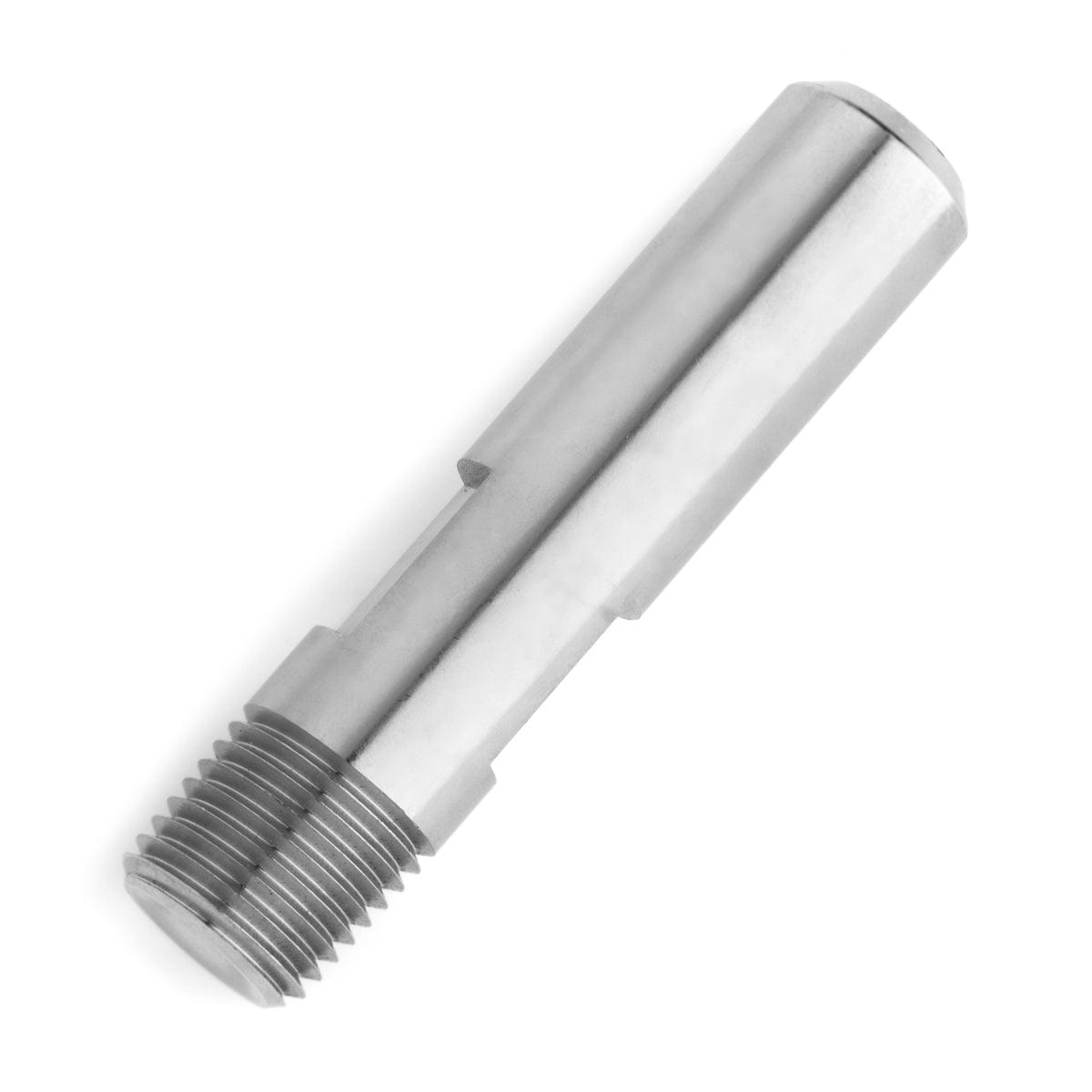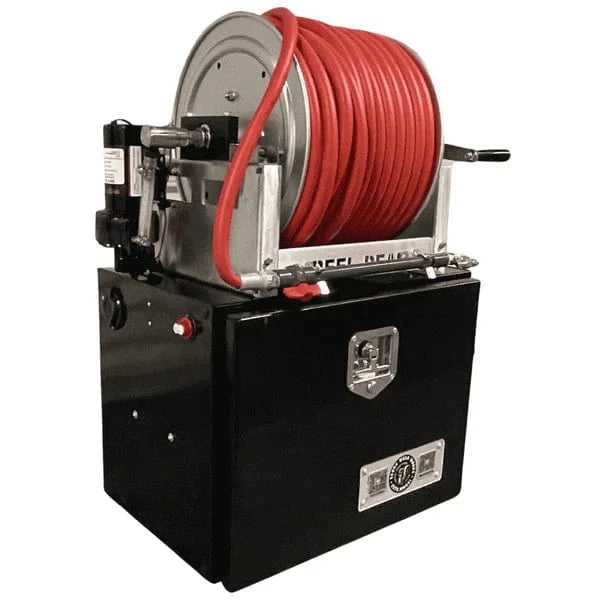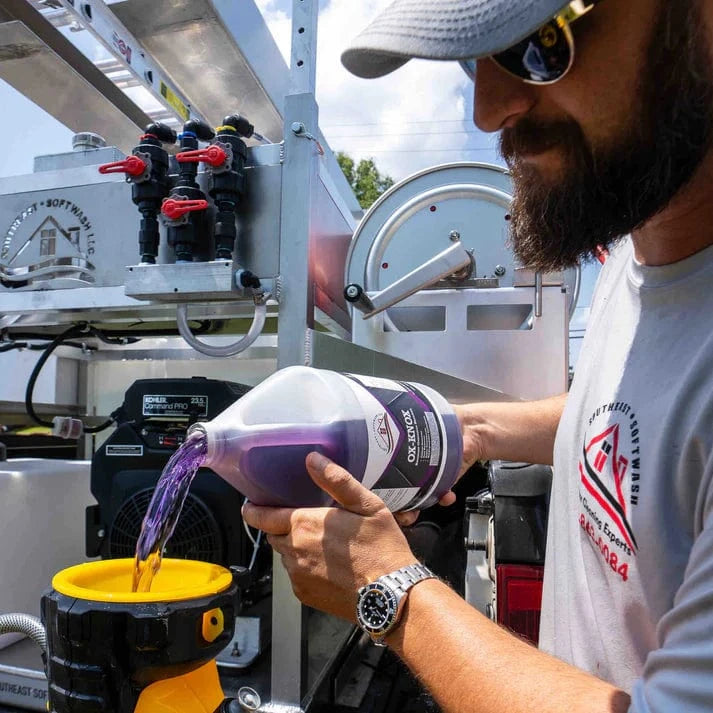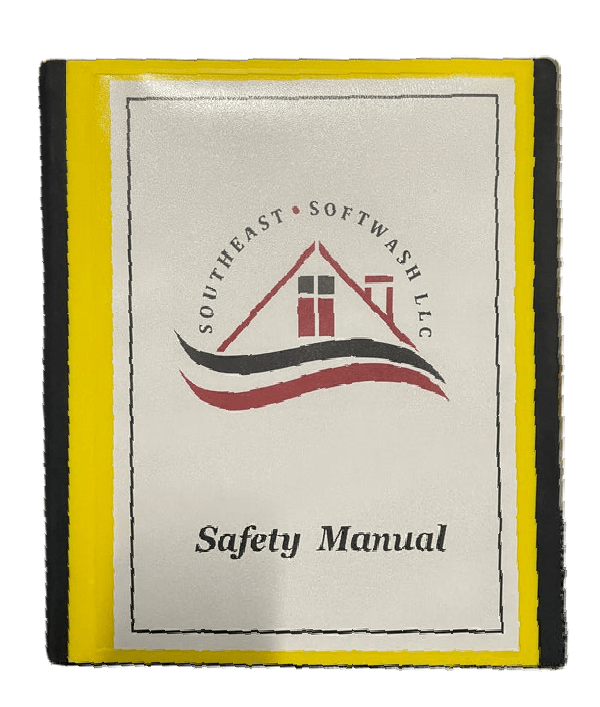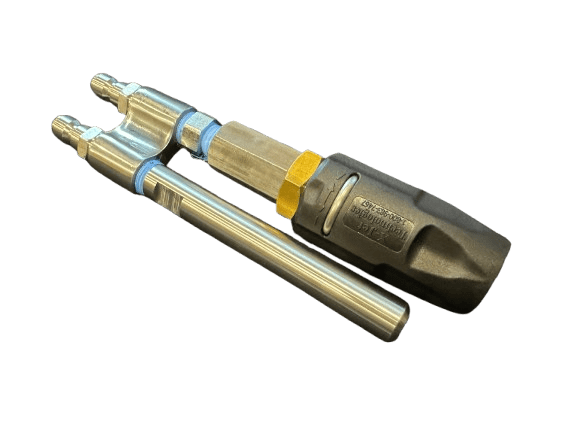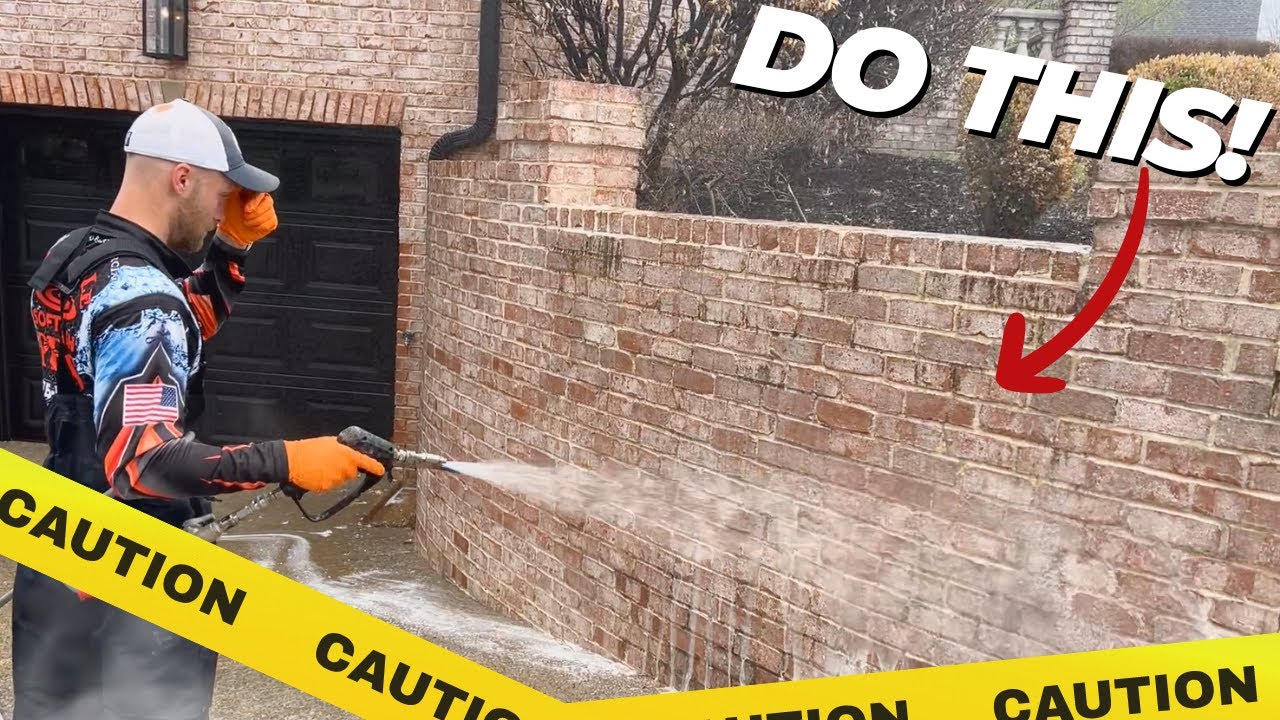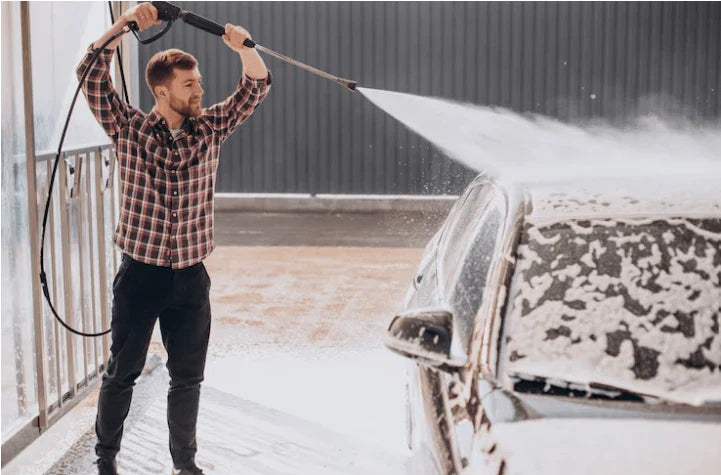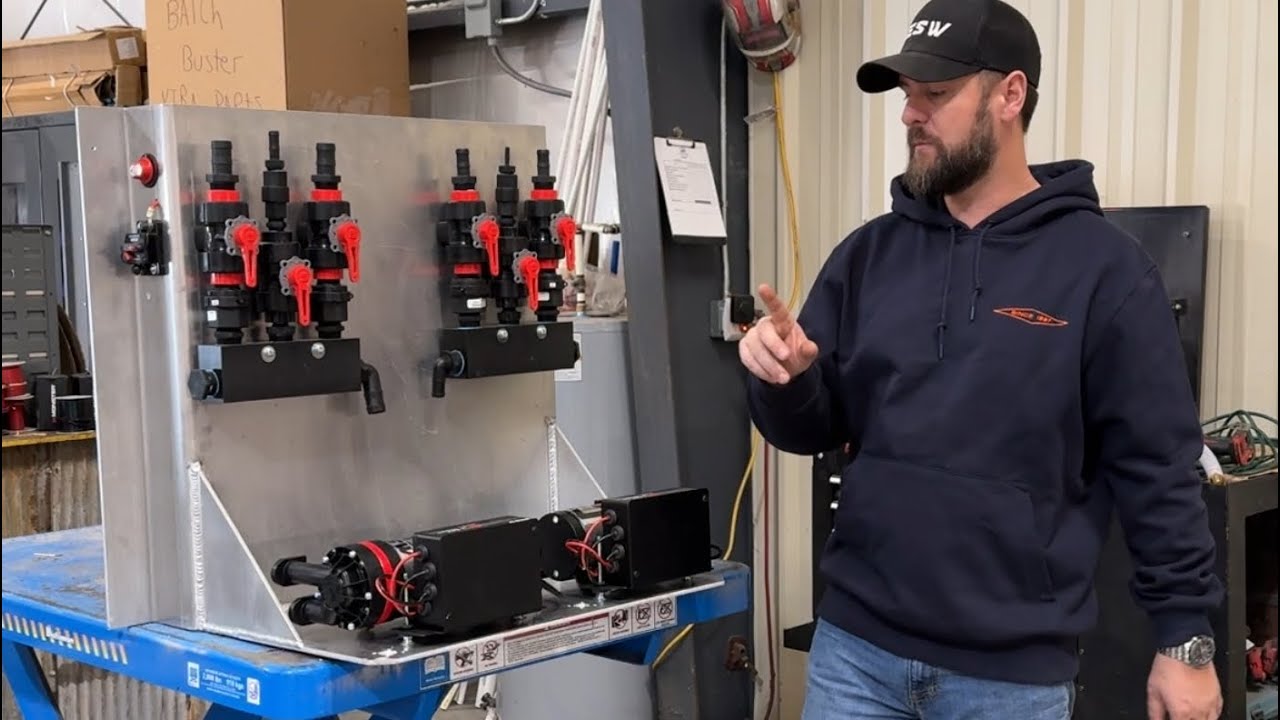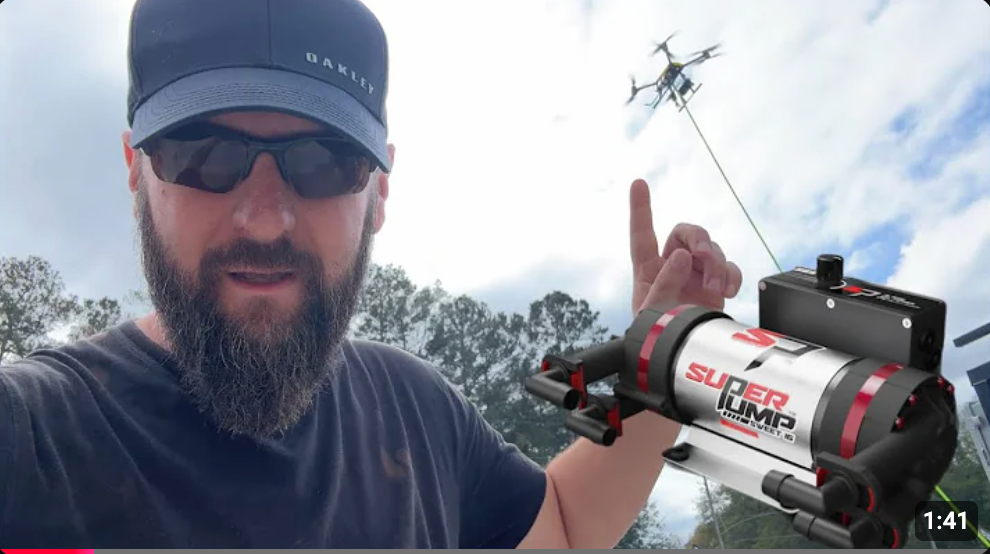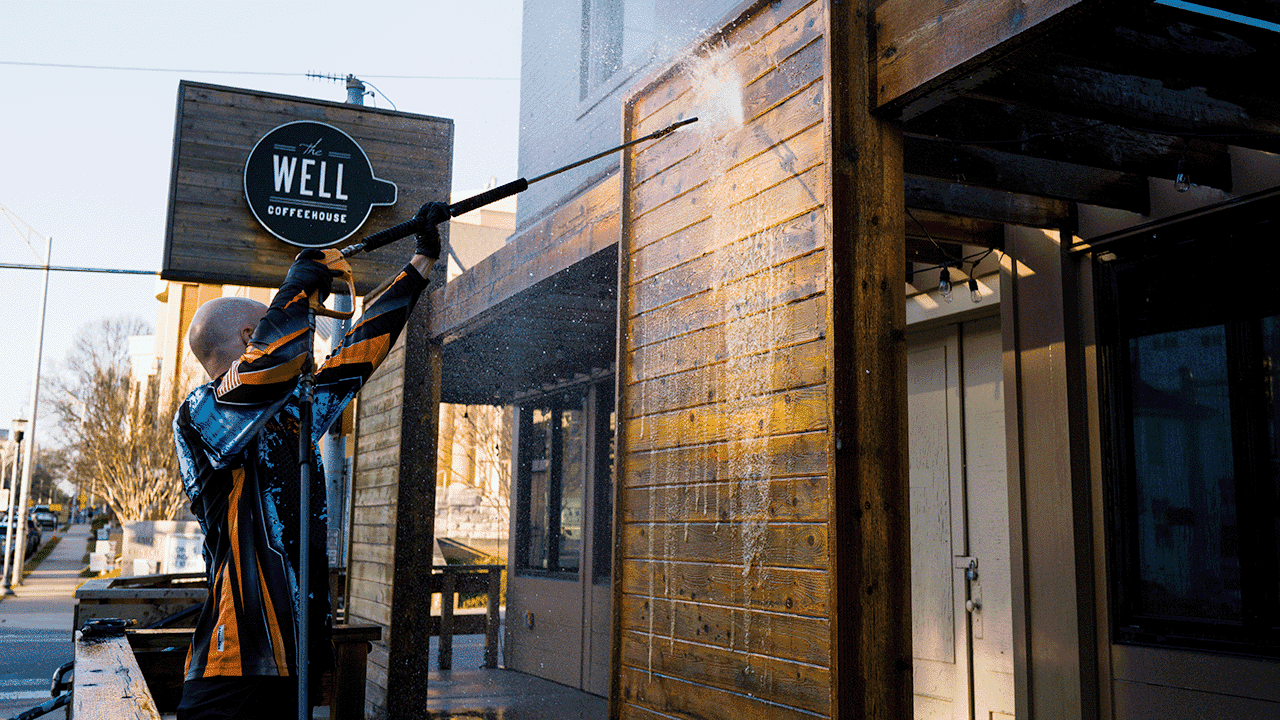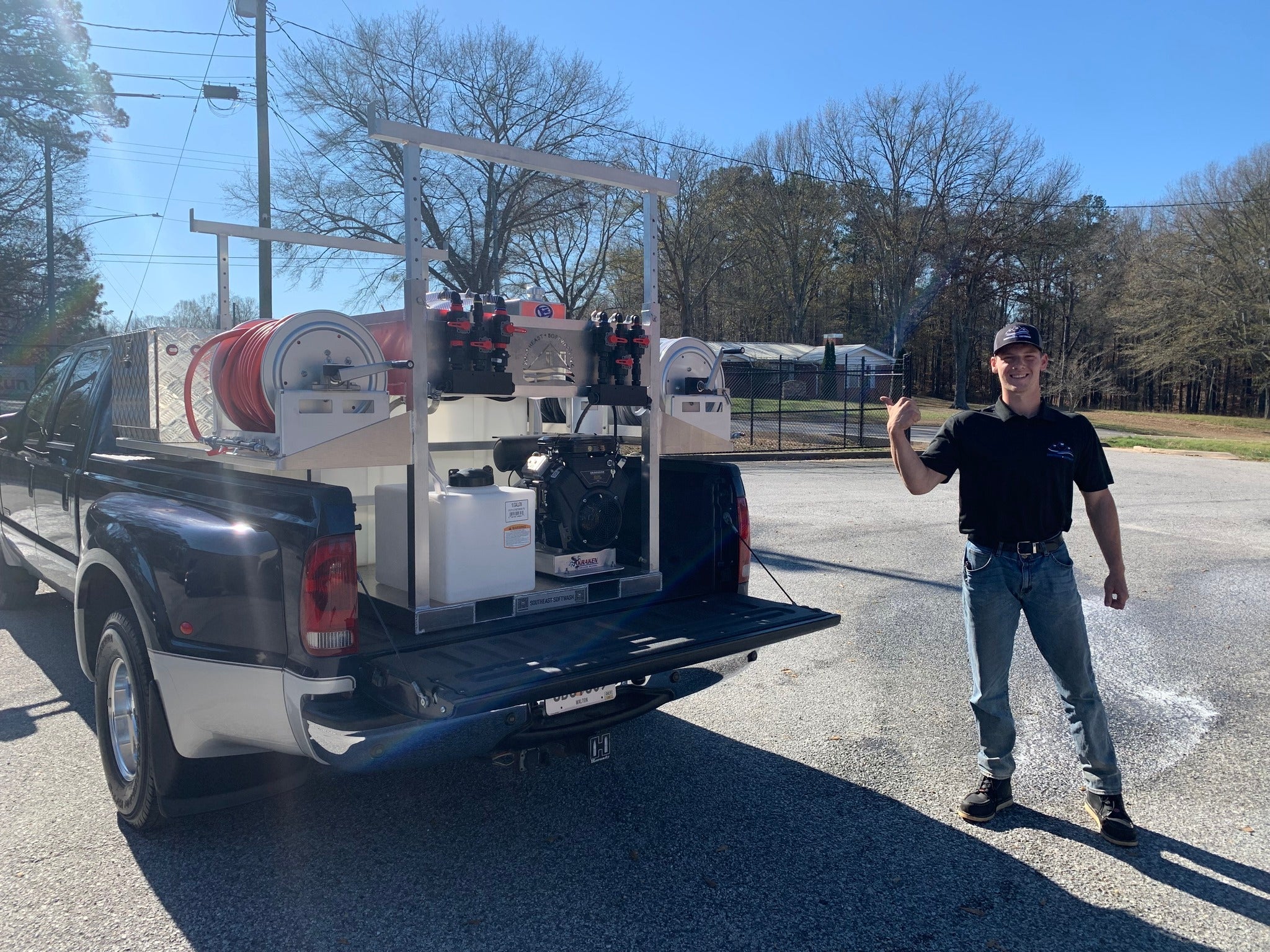Graffiti is a common problem that many property owners face. Whether it's on the exterior walls of a commercial building or the fence surrounding your home, graffiti can be an eyesore and negatively impact the overall appearance of a property. If you're dealing with graffiti, pressure washing can be an effective method to remove it. In this article, we'll discuss the best pressure washing techniques for removing graffiti.
1. Soft Washing versus Pressure Washing
Before we delve into the specific techniques, it's important to understand the difference between soft washing and pressure washing. Soft washing is a low-pressure cleaning method that uses specialized equipment and detergent solutions to remove dirt, grime, and other contaminants gently. Pressure washing, on the other hand, utilizes high-pressure water to remove tough stains and debris. For graffiti removal, a combination of soft washing and pressure washing techniques is often necessary.
2. Safety Precautions
Before starting the pressure washing process, it's essential to prioritize safety. Wear protective gear, such as goggles and gloves, to shield yourself from any chemical splashes or debris. Additionally, ensure that the area around the graffiti is clear of any objects that could be damaged by the pressure washer.
3. Pressure Washing Equipment
To effectively remove graffiti, you'll need the right pressure washing equipment. Invest in a professional-grade pressure washer with adjustable pressure settings. This will allow you to control the pressure based on the surface you're working on. Additionally, using a narrow nozzle will provide more concentrated cleaning power to remove the graffiti effectively.
4. Pressure Washing Chemicals
When it comes to graffiti removal, using the right cleaning chemicals is crucial. Various pressure washing chemicals are specially formulated to break down and remove graffiti from different types of surfaces. It's important to choose chemicals that are safe for the specific material you're working with, whether it's concrete, brick, or vinyl siding. Consult a professional or read the product instructions to ensure you're using the appropriate graffiti removal solution.
5. Testing an Inconspicuous Area
Before applying the pressure washing chemicals and efforts to remove graffiti from the visible area, it's always recommended to test the cleaning solution on an inconspicuous surface. This will help you determine the effectiveness of the cleaner and ensure it doesn't cause any discoloration or damage to the material.
6. Pre-Treating the Surface
Before starting the pressure washing process, pre-treating the surface can help loosen the graffiti and make it easier to remove. Apply the graffiti removal solution to the affected area and allow it to sit for a few minutes. This will give the chemicals time to penetrate the graffiti and break it down.
7. Adjusting Pressure Settings
Once the pre-treatment has had time to work, it's time to start pressure washing. Begin with low-pressure settings and gradually increase the pressure if needed. Adjust the pressure based on the surface you're working on to avoid causing any damage. When removing graffiti from more delicate surfaces, such as vinyl siding, use lower pressure settings to avoid water intrusion or surface erosion.
8. Proper Technique
Using the right pressure washing technique is essential for efficient graffiti removal. Hold the pressure washer nozzle at a distance of about 12-18 inches from the surface and direct it at a 45-degree angle. This angle allows the water and cleaning solution to dislodge the graffiti without damaging the surface. Move the nozzle in smooth, overlapping motions to ensure even cleaning. Avoid staying in one spot for too long as it may cause etching or visible marks on the material.
9. Repeat if Necessary
In some cases, graffiti may be deeply embedded or resistant to the first round of pressure washing. If necessary, repeat the pre-treatment and pressure washing process. However, exercise caution and ensure you're not causing any damage to the surface by applying excessive pressure or using harsh chemicals.
10. Post-Treatment and Rinse
Once the graffiti has been successfully removed, it's important to thoroughly rinse the area to remove any leftover cleaning solution or debris. This can be done using clean water and moderate pressure. Pay close attention to crevices or hard-to-reach areas to ensure a complete rinse.
11. Protecting Surfaces
After removing the graffiti, you may want to take additional measures to protect the surfaces from future vandalism. Applying a clear coat sealant or anti-graffiti coating can create a barrier, making it easier to remove future graffiti without causing damage to the underlying material.
12. Professional Help
While pressure washing can be an effective method for graffiti removal, sometimes it's best to seek professional help. Professional pressure washing companies have the knowledge, experience, and specialized equipment to tackle even the most challenging graffiti removal projects. They can ensure the job is done safely and effectively, saving you time and effort.
Transform Your Property with Effective Graffiti Removal
Removing graffiti from your property not only improves its appearance but also helps maintain its value. By following the best pressure washing techniques discussed in this article, using quality pressure washing equipment, and selecting the appropriate cleaning chemicals, you can effectively remove graffiti and restore the beauty of your property. Remember to prioritize safety, test cleaning solutions, and adjust pressure settings based on the surface you're working on. If you're facing a particularly stubborn graffiti problem, don't hesitate to seek professional assistance. Take action against graffiti and transform your property into a clean and inviting space!
Discover the creativity of other Shopify store owners by visiting their online stores. Just click here to access the store. Please be aware that this is a promotional link, and we assume no liability for the content of the linked store.


